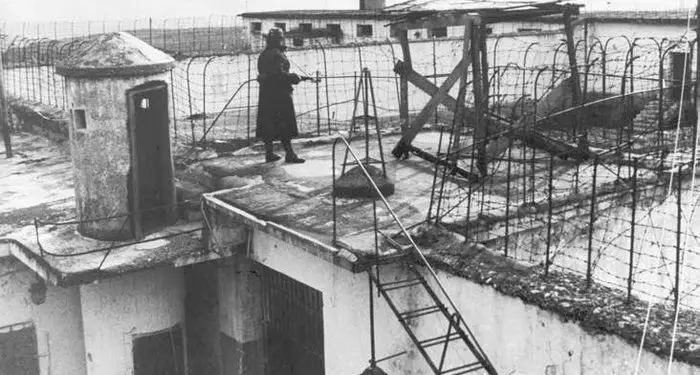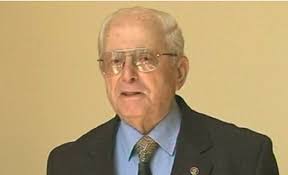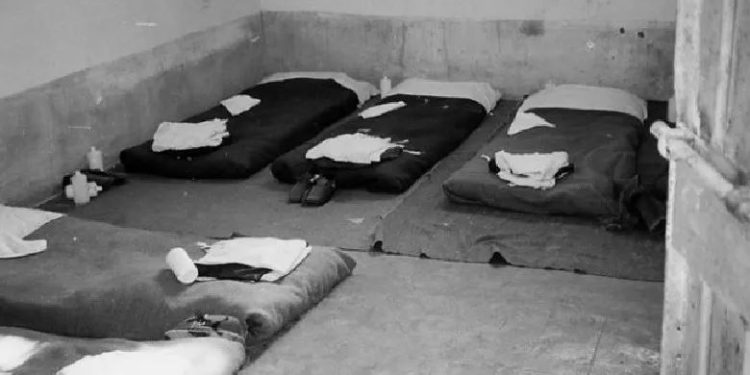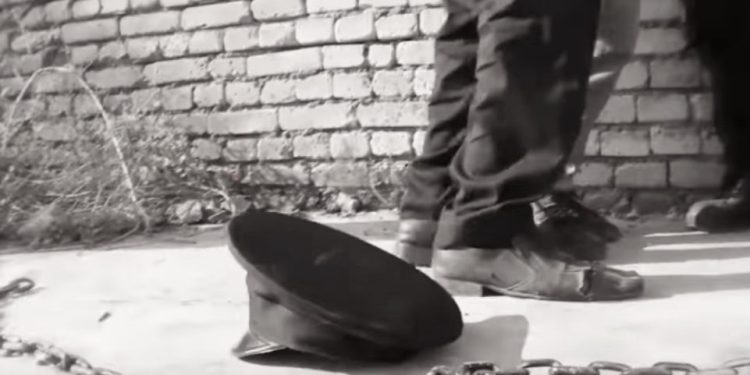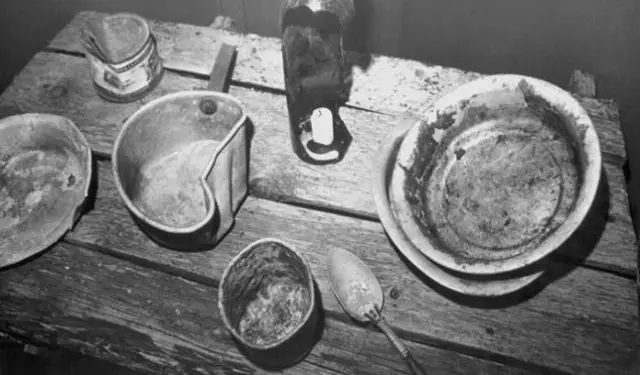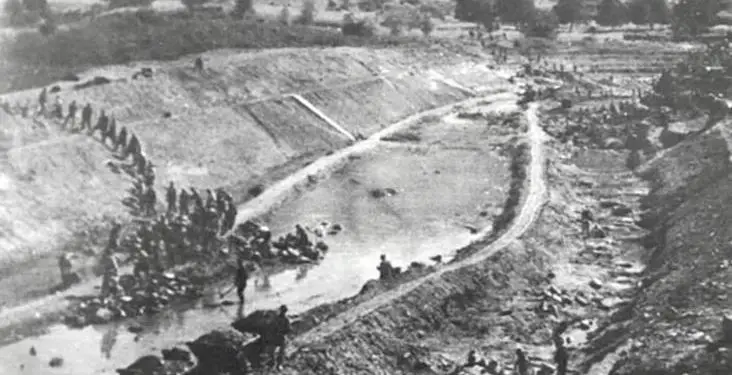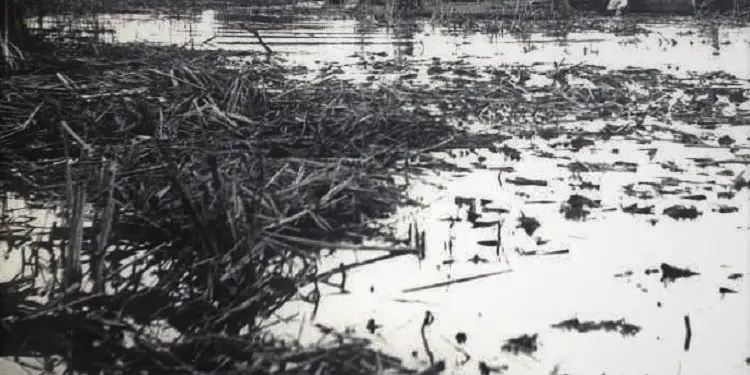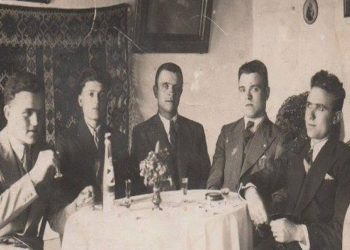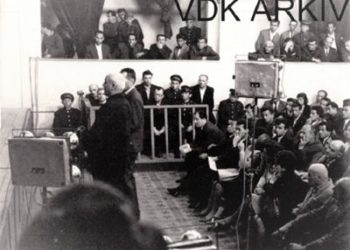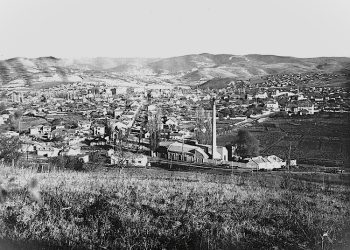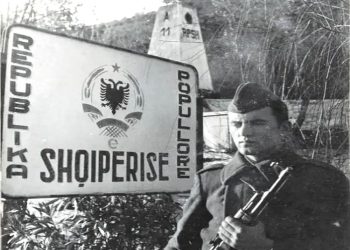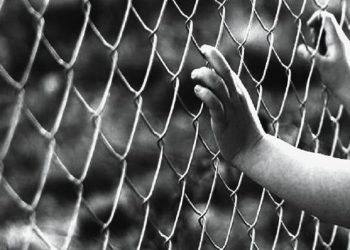From Agim Musta
Second part
Memorie.al / On the fourth anniversary of the passing away of the well-known historian, researcher, writer and publicist Agim Musta, (July 24, 2019), former political prisoner, his daughters Elizabeta and Suela, gave him the right and exclusivity for the publication, by the online media Memorie.al, of one of the author’s most prominent publications, such as the ‘Black Book of Albanian Communism’. This work contains numerous data, evidence, facts, statistics and arguments unknown to the general public, on communist crimes and terror in Albania, especially against intellectuals, in the period 1945-1991. The publication for the first time of parts of this book, on the Memorie.al platform, is also the realization of one of the bequests of the historian Agim Musta, who, from the beginning of 1991 until his death, for nearly three decades was engaged with all his powers, working to raise the collective memory, through book publications and publications in the daily press. All that voluminous work of Mr. Agim Musta, concretized in several books, is a contribution of great value to the disclosure of the crimes of the communist regime of Enver Hoxha and his successor, Ramiz Alia. A good part of the publications of Mr. Agim Musta, is also translated into English. Thanking the two daughters of the late Musta, who chose Memorie.al, to commemorate their father, from today, we are starting the publication, part by part, of the “Black Book of Albanian Communism”.
Continues from last issue
-The prisons of the Albanian communist state-
(1945-1991)
- Burrell’s prison hell
He paid for this courage with three months of solitary confinement, which later caused his death. In this prison, prominent intellectuals died; Xhevat Korça and Gjergi Kokoshi, former ministers of education; the major, Xhavit Leskoviku and the well-known generals, Abaz Fejzo, Gjin Marku and Vaskë Gjini; doctors Aleksandër Kalivopulli and Miço Konomi; the first Albanian playwright Ethem Haxhiademi, the polyglot linguist, Arqile Tase and many others, politicians, patriots and intellectuals of all fields.
Even this terrible prison of the communist dictatorship, which was called the “frontline of Albanian intellectuals”, was broken out on August 2, 1967, by brave and courageous young men: Sazan Hadëri from Gjrokastra, Dhori Gernjoti from Korça and Adem Allçi from Tropoja.
Sazani was killed by the gunfire of the prison guards, a few steps after crossing the barbed wire fence, while the other two, Allçi and Gërnjoti, were later captured wounded and sentenced to 25 years in prison. This prison was closed by the dictatorial Albanian state in 1990, a few days before the arrival in Albania of the Secretary General of the UN, Mr. Peres De Cuellar.
- Prisons of Shkodra
Shkodra, as the prefecture with the most anti-communist elements in Albania, ranks first for the large number of prisons and cells created in the city, from the end of 1944 until 1949. At the end of 1944, the number of of those arrested in Shkodër reached 1,800 people, while after the Postriba Uprising, in September 1946, the number of detainees reached 3,000 people.
Military trials, during the period 1945-1948, wreaked havoc and every day dozens of people were sentenced to severe imprisonment and shooting. The prisons were filled with simple highlanders, students, merchants, ex-soldiers and clergy, of all faiths. Shkodra had turned into a big prison. All citizens lived in anxiety for the uncertain tomorrow. Among the prisons that existed during this period, we mention:
1) The Great Prison of the Prefecture, with a capacity of up to 300 people. This prison has existed since the time of the Albanian Kingdom.
2) Gestapo prison, during the German Nazi occupation, the “Skenderbeg” school was turned into a Gestapo prison and continued as such until 1947.
3) Prison of the Assembly of Friars. The Assembly of Franciscan Friars returned to the prison at the end of 1944.
4) Cells of the Internal Affairs Branch.
5) The prison adapted to the stores of Ulcinak.
6) Prison in the Briotil house.
7) Prison in the house of Faslli Adem.
8) The prison in the cellars of the house of Dr. Karamitrit.
9) Prison in the house of Cekaj (Serreq)
10) Prison in the Assembly of Nuns.
11) Prison in the house of Churches.
12) Prison in the dormitory “Malet tona”
In these prisons, the most inhuman tortures were used and as a result, several dozen Albanian intellectuals lost their lives, among them, we mention: lawyers Muzafer Pipa, Pal Zefi, clergymen; Brother Gjini, Father Pal Doda, Father Aleks Baçli, Professor Qemal Dracini and many others.
- Peshkopia prison
In the prefecture of Dibra, before 1944, there was a small prison near the Gendarmerie Command. During the Italian fascist occupation, a number of cells were built in this prison, where those detained for political reasons were kept. At the end of 1944, the prison was located in the private house of Ymer Maliqi and had a capacity of 50 people. At the beginning of 1945, two barracks of the former Italian army were adapted into cells and a prison.
The number of those arrested for political motives reached 400 people. With the prisoners of Dibra, a large number of judicial processes accelerated by military courts took place, where several hundred arrested were sentenced to heavy imprisonment and execution, for their nationalist ideas, such as; Professor Edip Tërshana, etc. The tortures in the cells and in Peshkopia prison were among the cruellest.
The burning ember torture was also used there, where the detainees were forced to step on burning embers with their bare feet. With the help of torture, the State Security bodies wanted to get the confirmation from the arrested mountaineers that they had participated in fighting against the Albanian and Macedonian partisans. Peshkopia Prison was closed in 1950 and its prisoners were forced to serve their sentences in forced labor camps.
- Craft Prison, Tirana
The Handicraft Prison, located on the outskirts of Tirana, in a building built by the Italians during the Second World War, was opened in 1950. This prison had the characteristics of a closed prison, but with forced manual labor.
In this prison, about 300 prisoners worked, men and women, divided between them. Work was done there almost entirely for the department of the Ministry of Internal Affairs. The Craft Prison had several departments such as: tailoring, carpentry, tailoring, quilting, etc. In the cardboard department in this prison, tens of thousands of documents and books of incalculable value were destroyed.
- Camps with forced labor of bonuses
- Maliqi’s camps. With the decision of the Political Bureau of the Party-state, in 1946, forced labor was legislated both for political prisoners and ordinary convicts. That year, in the district of Korça, three forced labor camps were opened for political prisoners, brought from all the prisons of Albania, who would work for the drying of the Maliqi Swamp.
Around 2,000 prisoners, divided into three labor camps: Nishavec, Vločisht and Orman Pojan, worked like the slaves of antiquity, in conditions so inhumane that they surpassed the Nazi labor camps. The prisoners worked submerged up to their navels in the mud of the swamp.
The reeds were cutting their legs and the leeches were sucking their blood. For the slightest mistake, the prisoners were cruelly tortured, putting them in fecal pits, or drowning them alive in the mud of the swamp, as happened to the young people: Elmaz Libohova and Vyrtit Giylbegu.
Many prisoners, in order to escape the slave labor and intolerable cruelties, committed suicide by throwing themselves on the barbed wire of the camp’s outer fence. Several diseases, such as typhoid fever, dysentery and parasites, wreaked havoc on the convicts.
The prisoners, although they worked 10 hours a day, were fed only 600 grams of moldy corn bread and rotten potato soup. Famine had reached unheard of heights. It is said that; the journalist Koço Semini, imprisoned in the Sorbonne in France, rushed like a madman to eat the vomit of a newly arrived prisoner.
The Albanian champion of beauty, the pharmacist Alfred Ashiku, almost lost his life from an iron blow to the head, by a guard, because he dared to eat a radish full of mud, to quench his hunger. The exhausted prisoners, who could not fulfill the norm, were beaten to death with spikes, by the policemen, who stood over their heads and their lifeless bodies were covered by the mud of the swamp. The commander of Maliqi’s camps was Tasi Marko, a heartless executioner (the brother of the member of the Political Bureau, Rita Marko), who was instructed that, in addition to the work of draining the swamp, he should also work for the extermination of a part of those 2000 unfortunates, who suffered the punishment there. As a result, 62 people died or were buried alive in the swamp of death, while dozens more committed suicide and died of diseases.
Those who survived this hell, when they returned to the prisons from where they came, were not even recognized by their families. The communist dictatorship also executed by hanging in Maliq the engineers who designed and worked on draining the swamp: Abdyl Shara, Kujtim Beqiri, Andrea Mano. Slovenian Zyrika Mano, Italian Euxenio Skaturo and Albanian engineer Mirush Përmeti were shot. Crime and terror had reached their peak. Works on draining the swamp continued until the end of 1951.
For the reclamation of the western lowlands of Albania, a large number of camps with political prisoners were built, in which the works continued until the beginning of the sixties. The work in these camps was grueling, similar to that of the Maliqi camps, but the treatment of the prisoners by the camp commanders was less cruel. This happened as a result of the secession of Albania from the tutelage of Titista Yugoslavia in June 1948.
It should be noted that in all the forced labor camps that dealt with the reclamation of fields, violence and torture were used from time to time, such as: tying prisoners to poles until they lost consciousness, beatings until they broke their limbs, tying them with irons to the point of paralysis of the hands, sewing the pockets in the winter season, and other tortures, which have been mentioned above.
About 10,000 political prisoners worked in these camps for a period of 15 years, of which 620 people died. Many others died later from diseases and the consequences of torture. The only tools used in draining the swamps and opening the canals were: pickaxes, shovels, belts and handcarts.
In addition to the camps for drying the Maliqi swamp, we mention other reclamation camps, according to the geographical extent, from the South to the North of Albania.
- Llakatund camp. About 600 political prisoners worked in this camp, in the period between 1949-1952. They opened a 12 km canal. long, to get water from the Vjosë River, which would irrigate the fields of the Llakatund farm.
- Levan camp. Even in this camp, the works continued during the years 1952-1954, to open second and third canals, to irrigate the fields of Myzeqe. The camp had a strength of 500 prisoners.
- Waribobe camp. It was built west of the city of Fier. 700 prisoners worked here, during the three-year period, 1953-1956, for the reclamation of the Hoxhara swamp.
- Radostima camp. It was built in the village of Radostîme in the district of Fier, with a force of 450 people, opening second and third canals in the field of Myzeqe and partially, in that of Mallakstra.
- Vlashuk camp. In this camp, about 1000 prisoners from all the prisons of Albania were gathered. The works started in 1948 and ended in 1953. At first. the camp was built in the village of Kozarë where drinking water was scarce and hygiene was in miserable conditions.
The prisoners who were there worked to open a 15 km canal. long, which would take the waters of the Devoll river to the fields of Kuçova and Lushnja. The terrain was hilly and the depth of the channel reached up to 12 meters. The cholera epidemic also occurred in this camp, which took the lives of 30 prisoners, but the command of the camp called it a diary and the truth about the dead was never revealed.
- Terbufi camp. This camp was set up to dry the marsh of Tërbufi with an area of 8000 hectares. About 900 prisoners worked here, during the period 1955-1957, More than 15 prisoners lost their lives in this swamp, while many others were infected by swamp lice and mosquitoes.
- Gosa camp. This camp was built 12 km. south of the city of Kavaja. Nearly 600 prisoners were gathered in it. Work was done on the construction of the irrigation canal; Peqin-Kavaje, 55 km. long, and for the opening of second canals, in the farm of Gosa. The works in this camp continued for three years, 1949-1952. In this camp, 15 prisoners lost their lives due to hard work and diseases.
- Lekaj camp. This camp was initially located near Rrogozhina and later moved to the village of Lekaj in Kavajë. The prisoners worked to open the irrigation channel; Peqin-Kavaja and of the second canals in the plain of Kavaja. The camp had a strength of 700 prisoners and the works continued during the period 1952-1957.
- Camp Beden. This camp was built in the south-west of the city of Kavaja and had a force of about 1000 prisoners. Here they were working on the opening of an irrigation channel, 15 km. long, in the time period 1950-1952. In this camp, the command used violence and torture against the convicts, as in the drying camps of Maliqi Swamp.
Thus, the young man from Mirdita, Nikollë Bardhoku, was brutally beaten and tied to a pole, until he died. The commander of the camp, Haxhi Pela, by order from above, prepared a plan for the annihilation of 15 intellectual prisoners, but the prisoners smelled the kobzi plan and in the last minutes, caused it to fail. In this camp, about 40 prisoners died from diseases, torture and work accidents.
- Juba camp. This camp opened in the district of Durrës in 1946, is one of the first forced labor camps. The prisoners, about 500 people, worked to open a 5 km drainage canal. long, in a swampy land. The work was exhausting and for food, only 600 grams of corn bread was given. From hard work, bad food and torture, 25 people died in this camp.
- Thumana camp. About 500 prisoners worked in this camp during the period 1960-1963. From Mamurras, to the edge of the Adriatic, (the coastal area between Patok and Cape Rodon), 100 km were opened. drainage canals, completely reclaiming Thumana Farm. The commander of the camp was the infamous Vangjel Rëmbeci.
- Gjadri camp, or Zadrima camp. This camp was built near Kakarriq village. About 900 political prisoners worked here during the period 1955-1958. They were working on the systematization of the Gjadri river and the reclamation of the Zadrima field. The work was very hard and in very difficult conditions. Many prisoners died from hard labor and suicide. In this camp, there was also an annex with prisoners, Greek citizens.
- Skrofotina camp. This camp was located 5 km. in the north of the city of Vlora, near the national road; Tirana-Vlora. The Skrofotina camp was not a reclamation camp, but there they worked on the construction of the largest and most modern salt pan in the country. Work in this camp began in 1967 and ended in early 1972. An 8 km embankment was built here. long, that separated the salt flat from the rest of the Narta Marsh. At the end of the embankment, a powerful hydrovor was built in the place called Pish-Poro.
About 700 political prisoners worked in these three facilities. All the salt basins were separated from each other by embankments of 8 m. high. The embankments were built by shoveling, mud and mud, until the set quota was reached. The work was exhausting and lasted no less than 10-11 hours a day, where the temperature in the sun (during the summer months) reached 40°-45 C. Many prisoners fainted from the heat of the sun.
The water to drink was brought in oil barrels, warm, like horse dung, that even the swamp toads would die if they drank it. But more unbearable, were the mosquitoes. From 10 o’clock in the morning, they came like a black cloud and left no room in the prisoners’ bodies, without biting.
Their faces and hands oozed blood from scratching. This was torture upon torture, unmarked in the dictatorship’s torture code. The terrain was mud and if you didn’t walk carefully, you could sink into it and drown, as happened to the writer Kin Dushi, who was only saved by chance from a sudden death.
Many prisoners suffered from ulcers and skin diseases. There were also suicides like that of Lake Butka, who committed “hara-kiri”. In this camp, the directorate of prisons and camps, with Sulejman Manoku in charge and the camp commissar Kiço Gjonçin, organized the camp show, with shaky and cowardly prisoners, who were promised release and reduced sentences.
The show parodied “American imperialism”, “Soviet revisionism”, “the internal enemy” and those co-sufferers, who could not fulfill the forced norm, with the help of this show, they thought to denigrate the healthy part of the political prisoners, but they failed with shame and the show melted, like salt in water. Memorie.al
The next issue follows




